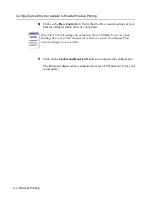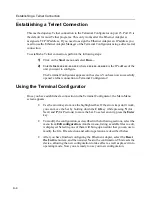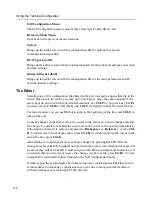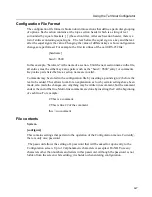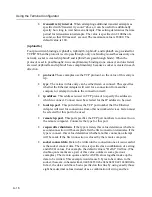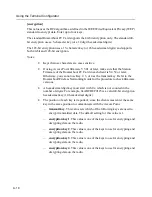
A-7
Using the Terminal Configurator
Configuration File Format
The configuration file format is broken down into sections that define a particular grouping
of options. Each section contains at the top a section header which is a string of text
surrounded by square brackets: [ ] (the section title). After each section header, there is a
list of entries containing equal signs. The text before the equal sign is a key and the text
after the equal sign is the value. Changing the value of different keys is how configuration
changes are performed. For example, the first two lines of the uart0 RS-232 file:
[hardware]
baud = 9600
In this example, “hardware” is the name of a section. Until the next section name in the file,
all entries must be either key/value pairs (such as the “baud = 9600” entry) or comments.
Key/value pairs listed before a section name are invalid.
Comments may be stored in the configuration file by inserting a pound sign (#) before the
text to be added. This allows room for an explanation as to why certain settings have been
made, who made the changes, etc. Anything may be written in a comment, but the comment
ends at the end of the line. Multi-line comments are done by inserting the # at the beginning
of each line. For example:
# This is a comment.
# This is line #2 of the comment.
this = no comment
File contents
System
[configure]
This contains settings that pertain to the operation of the Configuration menus. Currently,
there is only one: password.
The password allows the setting of a password that will be asked for upon entry to the
Configuration screen. Up to 12 alphanumeric characters is accepted. Do NOT use any
characters other than numbers and letters in this password. Although the password is not
hidden from the screen while editing, it is hidden when entering configuration.








